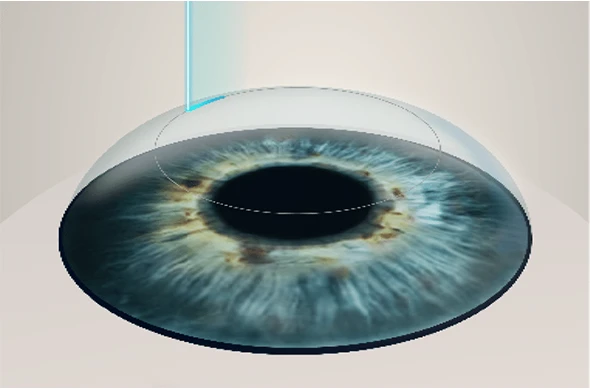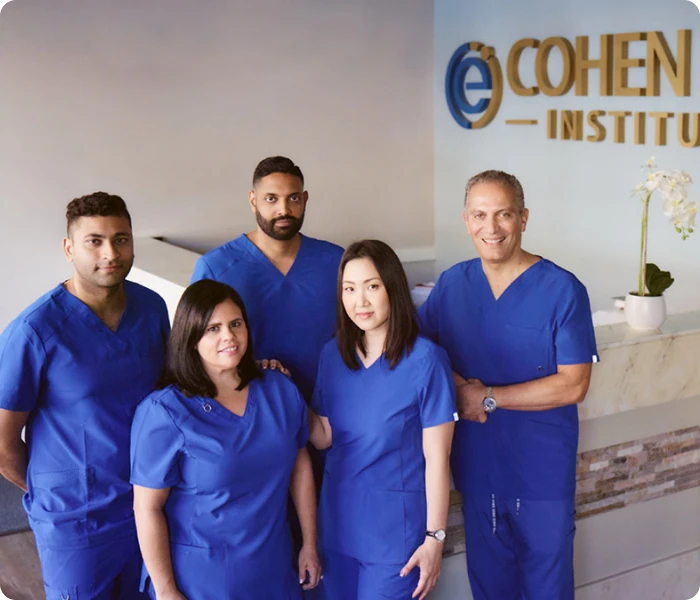The Revolutionary Laser Vision Correction Surgery
Small Incision Lenticule Extraction (SMILE) is a laser vision correction surgery that became popularized for the treatment of myopia and astigmatism since 2016. It is the most recently developed refractive laser eye surgery. It is performed on the cornea (the front surface of the eye), similar to LASIK and PRK, but it has some unique features that might be more suitable for some patients.
Of course, there are many unique features to each type of vision correction surgery and no one solution is best for everyone, or even for the majority of people. For example, neither LASIK nor SMILE are the best option for reading vision if you are over 45. For the best correction of both near and distance vision, the preferred option is Clear (Refractive) Lens Exchange. Here, we compare the advantages and disadvantages of SMILE vs LASIK and PRK.
Dr. Cohen is a fellowship-trained cornea specialist and has devoted his career to fine-tuning and perfecting surgical techniques that can change your vision and your life. This is perhaps the reason that more than 1,000 physicians have chosen him for the correction of their own vision.

Using a laser, the SMILE procedure cuts a tiny, disc-shaped piece of tissue called a lenticule from within your cornea. This lenticule is then removed from the cornea via a small incision. This process reshapes the cornea, and in turn, corrects and improves the patient’s eyesight. The whole treatment takes less than 15 minutes for each eye.
SMILE has become a popular alternative to LASIK as it is generally considered a less invasive procedure. During LASIK, a circular corneal flap is created, then lifted. A laser is then used to reshape the inner cornea for vision correction. The incision made during SMILE is smaller than the one made during LASIK, and some would even go as far as calling this a flap-less LASIK procedure. This description is not accurate. A flap is created, but not lifted as it is in LASIK surgery. This is the reason that some patients that already suffer from dry eyes may benefit more from SMILE. The risk of dry eyes is low with LASIK, and even lower with SMILE, but still not zero.
SMILE is also less likely to cause complications such as flap-related problems and corneal thinning, as there is minimal disruption of the eye’s structure.
The complete treatment takes less than 15 minutes per eye, and patients usually report little pain, and quick recovery periods.


A large flap is made to reshape your cornea
A small incision is made to reshape your cornea
About 1 day
About 1 week
Very low
Even lower but not zero
Available
Limited
Very low
Even lower but not zero
Best (with Contoura)
Good
Bladeless
Bladeless
25 years
7 years
SMILE is a safe and effective option for patients who are looking to correct their vision. However, not everyone is a good candidate for SMILE. The ideal candidate for SMILE has the following attributes:
It is important to note that SMILE is not suitable for patients with severe nearsightedness or those with thin corneas. It is also not available for patients who are farsighted or who have high levels of astigmatism or irregular astigmatism. LASIK or PRK surgery may be a better option for these patients.
Dr. Sapna Parikh reports on the very first case of an ICL in New York performed by Dr. Ilan Cohen.
The SMILE surgery is done as an outpatient operation. To decrease pain during the surgery, the surgeon will apply numbing drops to the patient’s eyes prior to the treatment.
Often, patients will feel pressure on their eyes when the surgeon makes the incision and removes the lenticule. They should not, however, feel any discomfort.
Patients may suffer some pain after the surgery, such as dryness, itching, and sensitivity. They must use eye drops for many weeks and refrain from scratching their eyes or engaging in intense activities. The majority of patients may return to work and regular activities within a few days following the treatment.



We feel that what makes patients most comfortable happens after they come to our office and meet our staff and doctors as well as Dr. Cohen. We take pride to say that our office staff and ambiance has a calming effect on even the most apprehensive patient.
2024 Cohen Eye Institute. All rights reserved.